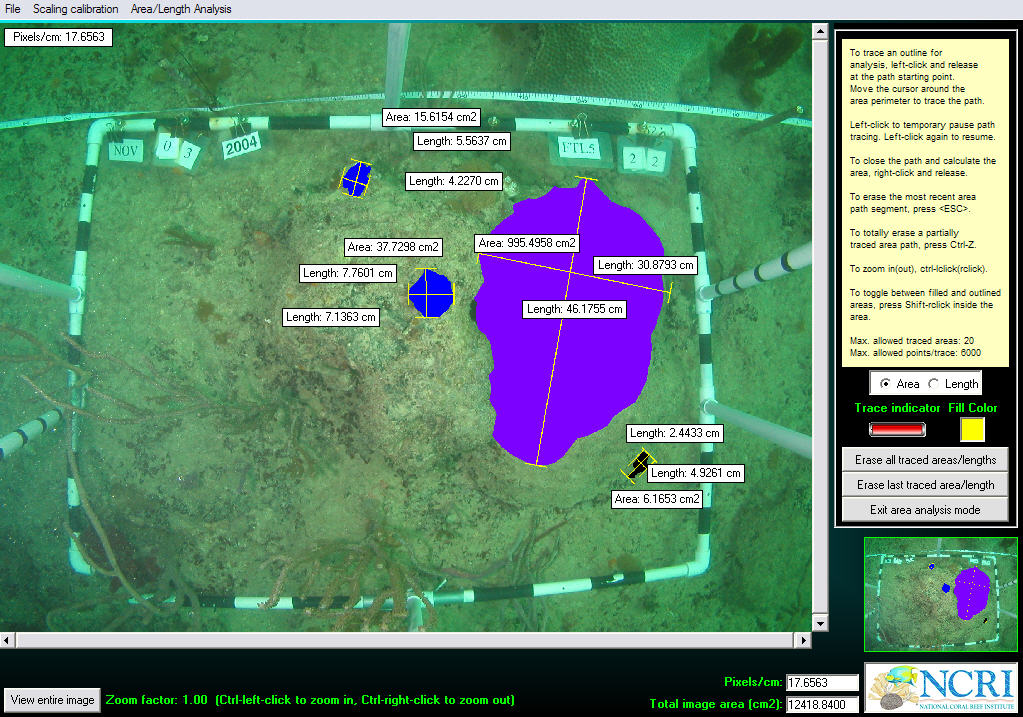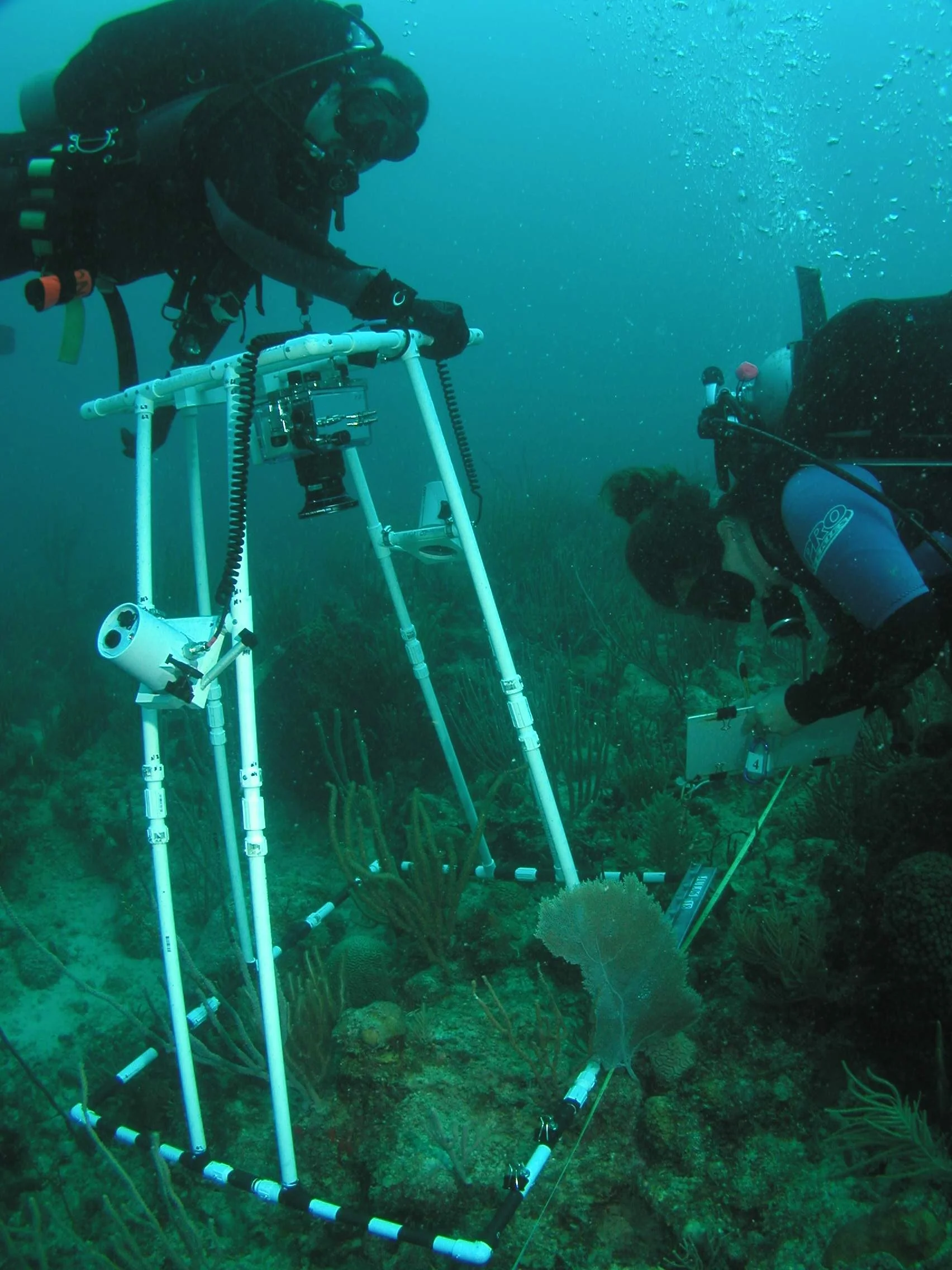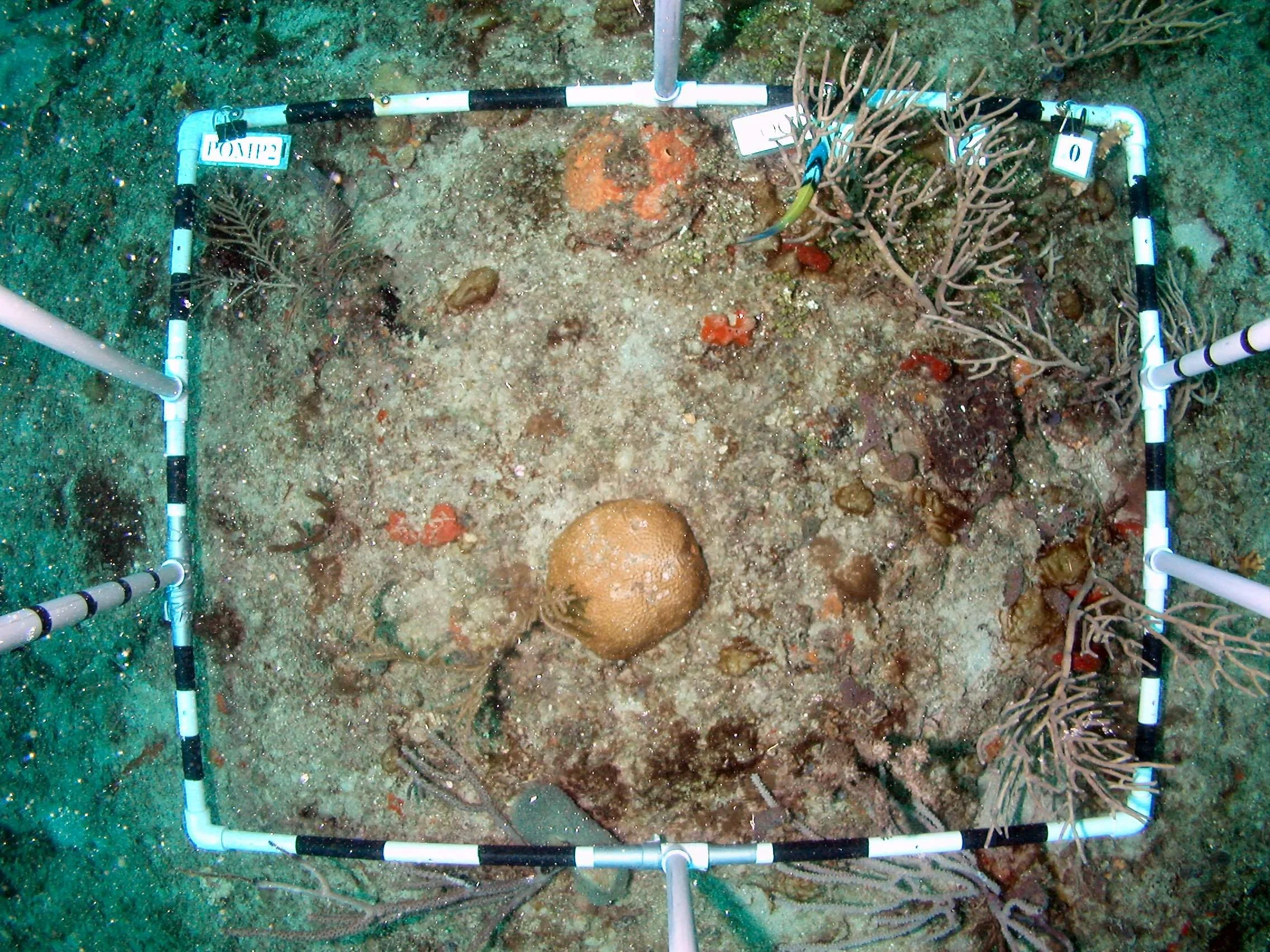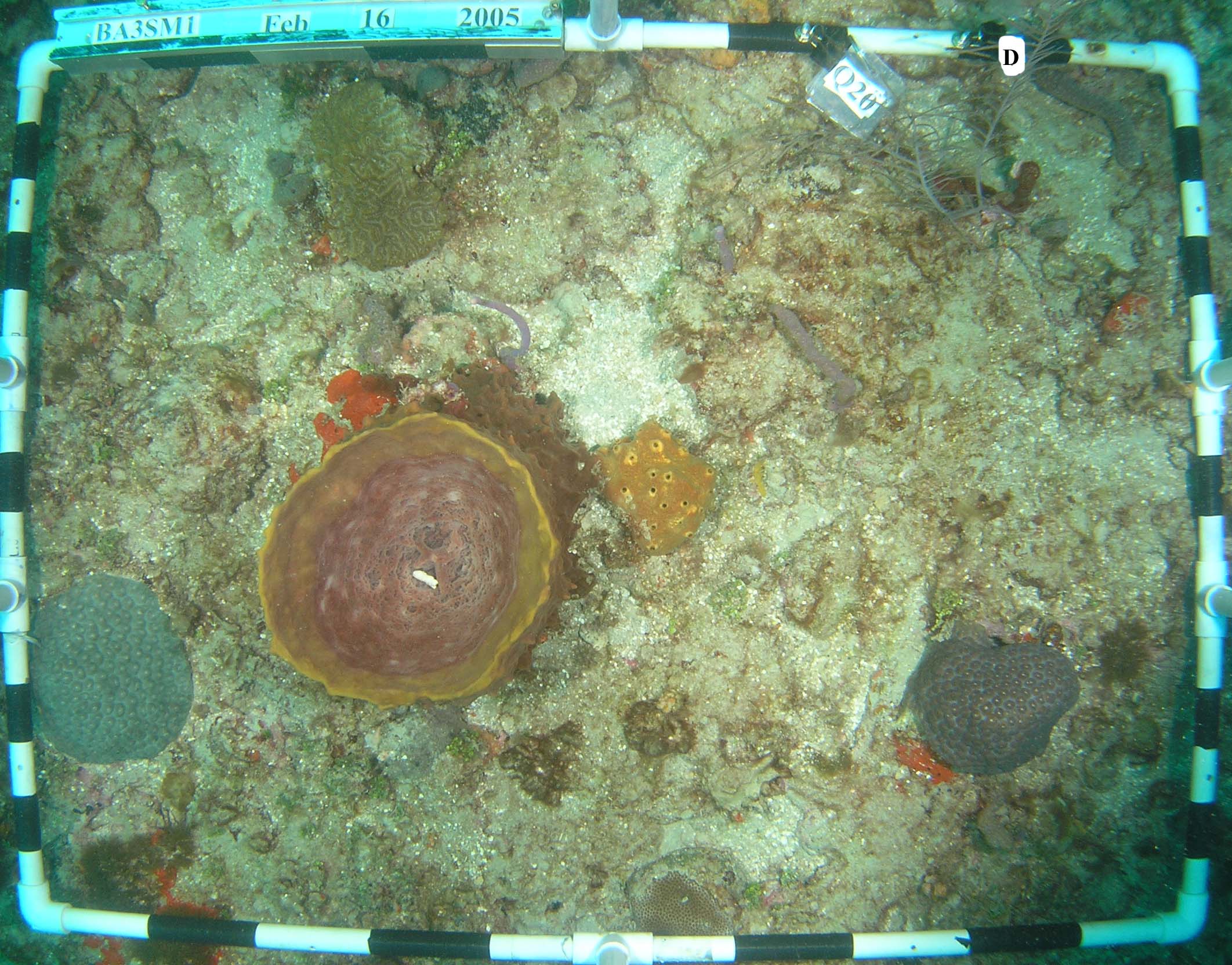CORAL POINT COUNT WITH EXCEL EXTENSIONS: (2005)
Coral Point Count with Excel Extensions (CPCe) is a Visual Basic program for the determination of statistical coral coverage using point count methodology developed by Kevin E. Kohler and myself while working for the National Coral Reef Institute at Nova Southeastern University Oceanographic Center.
This was an exercise in need finding, design thinking, and reframing problems.
Traditionally, point counting involved visually analyzing underwater images taken with camera framers and manually recording data present within the images. The process was tedious and time consuming. At the time, some software existed which semi-automated the point counting data collection process, but it was not very customizable or user friendly.
After listening to the needs of scientists and field researchers, I was convinced a better tool could be created, and presented Kevin with some hypothetical software ideas. For several years we collaborated; Kevin programmed and I beta tested. Together we designed and aligned digital tools with the scientific community’s needs. We eventually released the first version of CPCe and published our first co-authored publication:
Kohler, K.E. and S.M. Gill, 2006. Coral Point Count with Excel extensions (CPCe): A Visual Basic program for the determination of coral and substrate coverage using random point count methodology. Computers and Geosciences, Vol. 32, No. 9, pp. 1259-1269, DOI:10.1016/j.cageo.2005.11.009.
The full article is available here.
The CPCe program was designed to quickly and efficiently calculate statistical coral coverage using the random point count method. Underwater photographic frames are overlaid by a matrix of randomly generated points, and the fauna/flora species or substrate type lying beneath each point is identified by an observer. The data for each image is stored and the accumulated data of several frames are combined and saved as a transect dataset. The transect datasets are then statistically analyzed to give quantitative measurements over the area of interest. Additionally, CPCe has the ability to determine the scaling calibration of the analysis images, and to calculate area coverage and length of traced regions.






Individual transect image taken with camera framer being pointcounted with CPCe. Newly designed point-and-click data collection along with spreadsheet processing dramatically increased the efficiency and efficacy when using pointcount methodology .